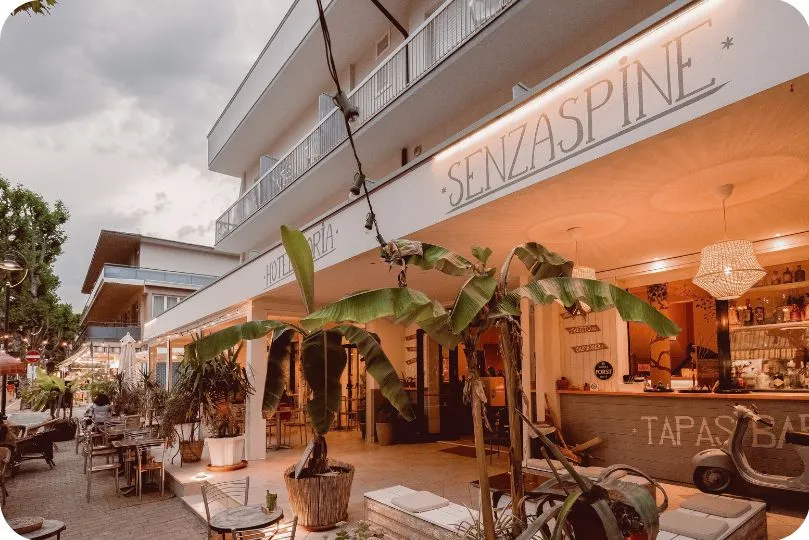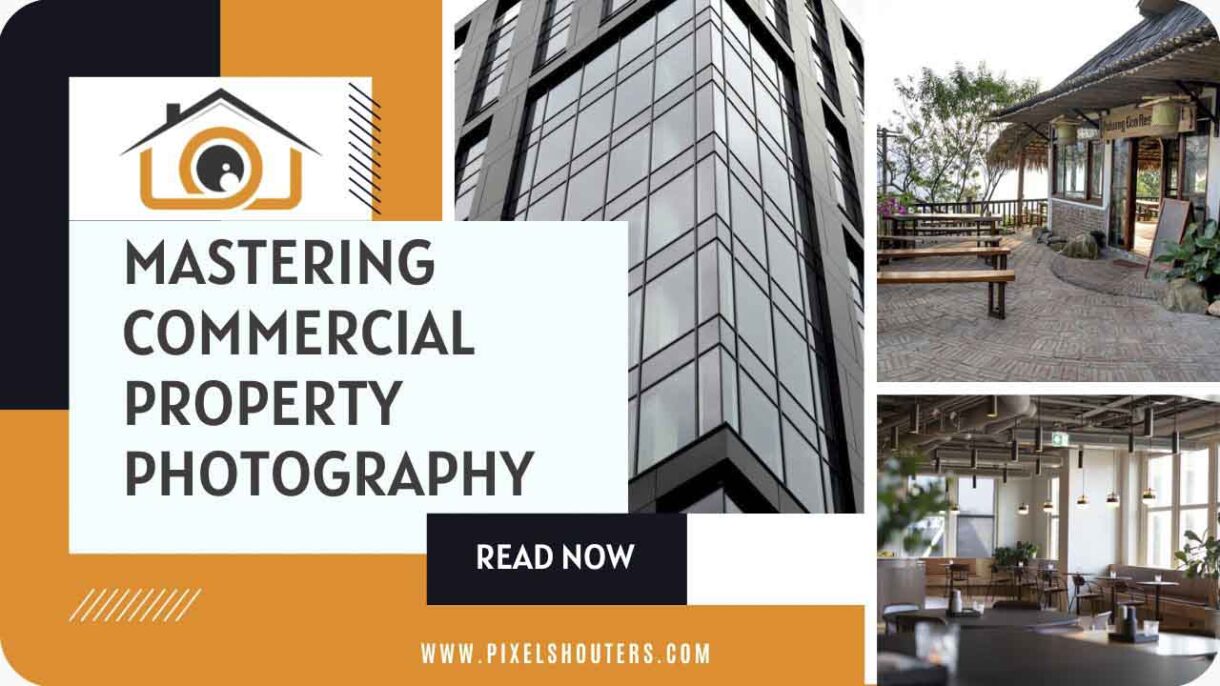Mastering Commercial Property Photography: Showcasing Properties with Stunning Visuals
Effective marketing is crucial in the cutthroat real estate industry to draw in prospective tenants and buyers. While various factors contribute to successful property marketing, one crucial aspect that can make or break a deal is the photography used to showcase commercial properties. High-quality photographs have the power to capture the essence of a property, highlighting its unique features, and creating an emotional connection with potential clients. In this article, we will explore the world of commercial property photography, uncovering essential techniques, equipment, and strategies that can help photographers master the art of capturing stunning visuals for commercial properties.
Table of Contents

The Role of Commercial Property Photography
Commercial property photography plays a pivotal role in marketing, enabling real estate professionals to present properties in their best light. The purpose of these visuals is to engage potential buyers or tenants, create a sense of desire, and ultimately drive interest and inquiries. Unlike residential real estate photography, commercial property photography requires a different approach due to the unique characteristics of commercial properties, such as office spaces, retail outlets, industrial facilities, and more.
Essential Equipment for Commercial Property Photography
To excel in commercial property photography, having the right equipment is crucial. A professional-grade camera body, a selection of high-quality lenses, and various accessories are necessary to capture captivating images. A full-frame camera with excellent low-light performance and dynamic range is ideal for commercial property photography. Wide-angle lenses, such as 16-35mm or 24-70mm, help capture expansive interiors and showcase the property’s features effectively. Tripods, remote triggers, and additional lighting equipment are also essential to ensure stability, control lighting conditions, and overcome challenging shooting environments.
Lighting Techniques for Commercial Property Photography
Proper lighting techniques are fundamental to creating compelling commercial property photographs. Lighting has a significant impact on the overall mood, ambiance, and visual appeal of the property. There are two primary approaches to lighting commercial properties: natural lighting and artificial lighting.
Natural lighting is ideal for capturing the exterior of commercial properties, showcasing the property’s surroundings, and leveraging the available daylight. However, it’s essential to time the shoot to capture the best natural light, typically during the golden hours of early morning or late afternoon. Additionally, consider the property’s orientation and the direction of light to maximize its impact.
In situations where natural light is insufficient or inconsistent, artificial lighting becomes crucial. Strobe lights, continuous lighting, and light modifiers can be used to enhance the interior and fill in shadows. Balancing the artificial lighting with the existing ambient light is essential to create a natural and inviting atmosphere. Additionally, techniques such as bracketing and exposure blending can be employed to capture a wide dynamic range and maintain detail in both bright and dark areas of the scene.
Composition and Framing
Composition and framing are vital elements of commercial property photography. Proper composition helps draw the viewer’s attention to the property’s key features and creates visually pleasing images. When composing your shots, keep in mind the rule of thirds, leading lines, and symmetry. The rule of thirds involves dividing the frame into a grid of nine equal parts and placing key elements along these lines or at their intersections. Leading lines, such as hallways or pathways, can guide the viewer’s gaze and create depth in the image. Symmetry can be effective in portraying balance and harmony, particularly in architectural photography.
Staging and Preparation
Before embarking on a commercial property photoshoot, proper staging and preparation are essential. The goal is to present the property in its best possible condition, creating an appealing environment for potential buyers or tenants. Start by decluttering and organizing the space, removing any unnecessary items that might distract from the property’s features. Cleanliness is crucial, as even small details can significantly impact the perceived value of a property.
Additionally, consider the purpose and target market of the property. For example, an office space may require a professional and minimalistic look, while a retail outlet might benefit from a more vibrant and engaging atmosphere. Collaborating with property owners, stylists, or interior designers can help create an aesthetically pleasing environment that resonates with the target audience.

Exterior Photography
Capturing the exterior of a commercial property requires careful consideration of angles, lighting, and framing to showcase its curb appeal and architectural features. Begin by scouting the property to identify the best angles and perspectives that highlight its unique selling points. Experiment with different viewpoints, including ground-level shots, elevated views, or even aerial photography using drones.
When photographing exteriors, it’s important to pay attention to the time of day and the direction of light. As mentioned earlier, the golden hours of early morning or late afternoon can provide soft, warm lighting that enhances the property’s appearance. Consider the property’s orientation and position yourself to capture the most flattering light. Use leading lines or pathways to guide the viewer’s gaze toward the entrance or focal points of the property.
Interior Photography
Interior photography of commercial properties presents its own set of challenges and opportunities. The goal is to capture the space in a way that conveys its size, functionality, and unique features. Begin by understanding the layout and purpose of the interior space to determine the best angles and viewpoints. Wide-angle lenses are typically used to capture more of the room, providing a sense of spaciousness.
Pay attention to the lighting conditions within the interior space. In some cases, the available natural light may be sufficient to create a pleasant atmosphere. However, artificial lighting may be required to supplement or enhance the existing light. Balance the lighting to avoid harsh shadows or blown-out highlights.
When composing interior shots, consider the flow and functionality of the space. Showcase key features such as high ceilings, unique architectural elements, or desirable amenities. Keep the space clean and clutter-free, and arrange furniture or props in a way that creates an inviting and aspirational ambiance. Be mindful of reflections in mirrors or windows and use them strategically to add depth and visual interest to the images.
Post-processing and Editing
Post-processing and editing services are a vital component of the real estate photography workflow, and Pixelshouters is at the forefront of providing top-notch editing solutions specifically tailored for the real estate industry. With a team of skilled and experienced editors, Pixelshouters understands the importance of creating visually appealing and impactful images that captivate potential buyers or tenants.
Pixelshouters real estate photo editing services offer a range of solutions to enhance the quality and presentation of property photographs. Using industry-leading software and advanced editing techniques, your team meticulously fine-tunes each image to bring out its full potential.

Exposure adjustments are crucial in real estate photography, as they can dramatically affect the overall look and feel of a property. Pixelshouters ensures that the exposure is properly balanced, optimizing the brightness and contrast of each image. By carefully adjusting the exposure, your team can showcase the property’s best features, highlight architectural details, and create an inviting atmosphere.
Marketing and Presentation
The final step in the commercial property photography process is marketing and presenting the images to potential clients. High-resolution images are essential for online listings, brochures, websites, and other promotional materials. Ensure the images are properly optimized for different platforms, keeping in mind file size limitations and resolution requirements.
Consider using virtual tours, 360-degree panoramas, or video walkthroughs to provide an immersive experience for potential buyers or tenants. These interactive elements can further engage viewers and help them visualize themselves in the property.
Conclusion
Mastering commercial property photography is a valuable skill that can significantly enhance the marketing efforts of real estate professionals. By understanding the unique challenges and techniques involved in capturing commercial properties, photographers can create visually stunning images that effectively showcase the features and potential of the spaces. Through proper equipment, lighting techniques, composition, staging, and post-processing, photographers can capture the essence of commercial properties and attract potential clients with impactful visuals.
Remember, practice and experimentation are key to improving your skills in commercial property photography. By continuously refining your techniques and adapting to different property types and client preferences, you can elevate your photography to new heights and become a sought-after professional in the industry.

[…] you clean approximately your advertising goals? Setting clear targets enables you layout effective Real Estate commercials that align with your standard advertising and marketing strategy. Are you trying to growth logo […]